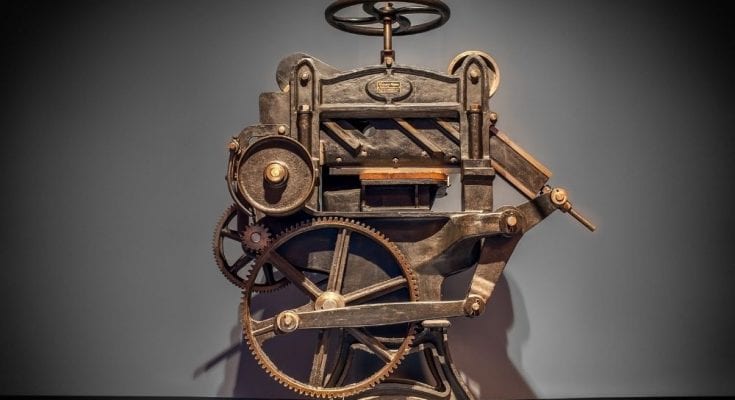When people hear the word technology in the 21st century, we often associate the term with diverse technological equipment and the latest hoopla of digital advancements. Per contra, technology is defined by the Oxford dictionary as the “application of scientific knowledge for practical purposes, especially in industry.” Technology is a science, an application, a method that makes means out of nothing—something that can happen within the arts, philosophy, and complex concepts of revolution.
The Renaissance period as we know it came about because of a change—a change to a way of thinking. This rebirth was a time of academic, artistic, and cultural reset that explored new avenues and fresh ideas to modify the practices and idiosyncrasies of circadian life. Our technological inheritance from this era prevails today because of the initial strides of such foregone time periods. Here are but some of the greatest existing technologies from the Renaissance.
A Revolution: Print Technology
Media and books, movies and books—where would we be without modern multimedia and books? Illusions can be elusive, but there is no denying the direct impact that widespread knowledge, insight, intelligence, and observation have on the world, including folk-wisdom and stories alike. The printing press is one of the most historic inventions of all time, existing as a technological application that is able to spread information to a larger audience.
Invented by Johannes Gutenberg around 1440, the printing press allowed for discoveries to be swiftly distributed among people, which prompted further allocation of knowledge in a cultural revolution. People began learning from one another via means that had not existed before. The printing press is the machine that made humans who they are and continue to be: more modernized thinkers and doers.
Artistic and Architectural Technologies
The spirit of the Renaissance era existed in the rise of an intellectual movement known as humanism. Philosophically, humanism is a stance that strongly spotlights the value and agency of human beings, calling attention to critical thinking over stark dogma. This philosophical thought radically transformed the era and immensely influenced the humanities by seeing an individual as a measure of the universe.
Humanism inspired groundbreaking artists of the time, such as the remarkable Da Vinci, Michelangelo, and Donatello, as well as architects such as Brunelleschi and Palladio. These Renaissance pioneers created new concepts of space and form that changed the way we look at the world. Their artistic techniques are truly some of the most extraordinary existing technologies from the Renaissance.
Medical and Scientific Technologies
The Renaissance contained much intellectual liberation from former researchers of the ancient world. In the earlier 16th century, past authorities began to get challenged or overthrown with fresher thinking methods and analysis through experimentation and observation.
New technological innovations within the scientific and medical field included early versions of microscopic and telescopic lenses for viewing and studying and prosthetic limbs during wartime. Other medical advancements were different types of forceps that a variety of medical facilities and professionals still utilize today in modern procedures. This progressive shift revolutionized research to seek out practical applications and embrace the unknown with forward-thinking mannerisms and attitudes.
Additional Resources:
Telegram



